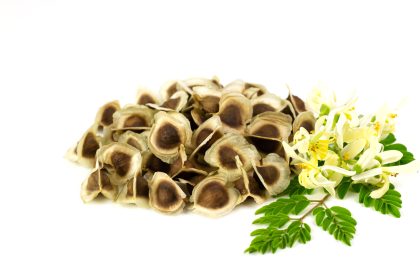The human digestive tract houses trillions of microorganisms. This complex ecosystem weighs approximately 4 pounds and contains more bacterial cells than human cells in your entire body. Once considered merely a digestive organ, the gut is now recognized as a key influencer of immune function, mental health, and metabolic processes.
As interest in gut health surges, so does confusion about how best to support this internal ecosystem. At the center of this conversation are two terms often conflated but fundamentally different. prebiotics and probiotics.
Understanding the crucial difference
The simplest way to understand the distinction between prebiotics and probiotics involves thinking of your gut as a garden.
Probiotics are the beneficial plants themselves. These living microorganisms provide direct benefits when consumed in adequate amounts. Common probiotic bacteria include various Lactobacillus and Bifidobacterium strains, along with certain yeasts like Saccharomyces boulardii.
Prebiotics function as specialized fertilizer. These non digestible food components selectively feed beneficial bacteria already residing in your gut. Unlike probiotics, prebiotics are not living organisms but specific types of plant fibers that humans cannot digest.
Research shows the combination creates more significant health benefits than either alone, a concept known as synbiotics. Studies examining synbiotic approaches demonstrate improvements in gut barrier function of up to 40% compared to control groups.
The science behind effective probiotics
Not all probiotic supplements deliver on their promises. Several factors determine whether living organisms survive long enough to provide benefits.
Strain specificity
Different probiotic strains offer different benefits. Lactobacillus rhamnosus GG shows effectiveness for preventing antibiotic associated diarrhea, while Bifidobacterium infantis 35624 demonstrates benefits for irritable bowel syndrome symptoms.
Researchers emphasize that probiotic benefits are strain specific. A particular strain might help with diarrhea but do nothing for allergies, despite belonging to the same bacterial species.
Quantity and quality
Effective probiotic doses typically start at 1 billion colony forming units, with therapeutic doses for specific conditions often reaching 10 to 50 billion CFUs. However, quantity alone means little if the organisms arrive dead.
Many supplement manufacturers now use acid resistant capsules or specialized coating technologies to help probiotics survive stomach acid. Refrigerated products generally maintain higher viability than shelf stable alternatives, though advances in freeze drying technology have improved stability of some products.
The overlooked power of prebiotics
While probiotics receive most of the attention, growing evidence suggests prebiotics may offer more consistent benefits because they work with your existing gut flora rather than attempting to introduce new organisms.
Types of prebiotic fibers
Not all dietary fibers function as prebiotics. True prebiotics selectively feed beneficial bacteria while providing minimal nourishment to potentially harmful microbes.
Common prebiotic fibers include
Inulin and fructooligosaccharides. Found naturally in foods like Jerusalem artichokes, onions, garlic, and chicory root.
Galactooligosaccharides. Often added to infant formula to mimic human milk oligosaccharides that support healthy infant gut development.
Resistant starch. Found in green bananas, cooled cooked potatoes, and legumes. This starch resists digestion in the small intestine and reaches the colon intact.
Research suggests most Americans consume only about 5 grams of prebiotic fibers daily, far below the 25 to 38 grams recommended for optimal gut health.
Practical strategies for better gut health
Rather than viewing gut health as a supplement regimen, nutrition scientists advocate for a comprehensive approach.
Focus on food first
Studies consistently show that diverse, plant rich diets support healthier gut microbiomes than any single supplement. People consuming 30 different plant foods weekly demonstrate significantly greater microbial diversity than those consuming fewer than 10.
Fermented foods provide natural probiotics. Options include yogurt with live active cultures, kefir, traditional sauerkraut, kimchi, and properly fermented pickles. These foods often contain multiple probiotic strains along with beneficial metabolites produced during fermentation.
For prebiotics, focus on fiber rich foods. Legumes, oats, apples, flaxseeds, and a variety of vegetables provide different types of fibers that feed various beneficial bacteria.
Consider supplements strategically
For specific health concerns, targeted supplements may prove beneficial. People taking antibiotics, for instance, show reduced risk of antibiotic associated diarrhea when supplementing with specific probiotic strains both during and after antibiotic treatment.
Those with inflammatory bowel conditions may benefit from specially formulated prebiotics that feed anti inflammatory bacteria without exacerbating symptoms.
Beyond bacteria
Emerging research suggests the gut microbiome extends beyond bacteria to include fungi, viruses, and even parasites that may contribute to a healthy ecosystem.
The gut brain connection represents another frontier in microbiome research. Scientists are uncovering how bacterial metabolites influence mood, cognition, and neurological health through the gut brain axis.
This expanding understanding suggests that the future of gut health lies not in maximizing any single factor but in cultivating balance across the entire internal ecosystem. Like any complex garden, diversity, stability, and adaptation to individual conditions ultimately determine whether your gut microbiome thrives or struggles.















